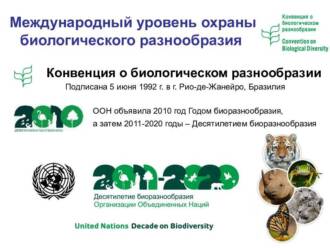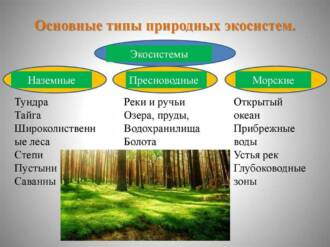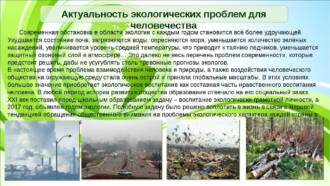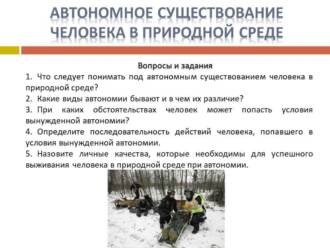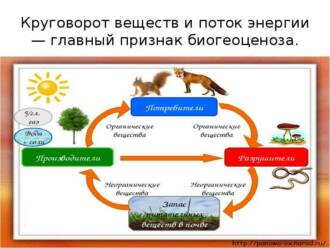
Butterflies are one of the most beautiful and graceful creatures of nature. They attract attention with their brightness and variety of coloring of the wings. However, in addition to their aesthetic value, butterflies play an important role in the ecosystem and make a huge contribution to the conservation of biodiversity.
First, butterflies are important plant pollinators. They carry pollen from one flower to another, facilitating the pollination process and allowing plants to reproduce. Fruiting and reproduction of many plant species depend on this, which is the basis of the food chain for many animals.
In addition, butterflies are a food source for many animals such as birds, frogs, and insectivores. They are an important part of the food chain in an ecosystem as they are a source of energy and nutrients for other organisms. Therefore, the conservation of butterflies is important for maintaining the biological balance and biodiversity in nature.
Butterflies also play the role of indicators of the state of the environment and ecological health. Changes in their numbers and species diversity can indicate changes in the ecosystem and the presence of environmental problems such as pollution, habitat loss and climate change.
In general, butterflies are indispensable members of the ecosystem and perform important functions for maintaining biodiversity. Their conservation and protection of natural habitats are essential to maintain a healthy and sustainable natural environment.
What are butterflies?
Butterflies are insects that belong to the class Lepidoptera. They are distinguished by their wings, covered with small scales, which give them beautiful and varied colors. Butterflies have two pairs of wings, which serve them for flight and protection from predators.
Butterfly anatomy: Butterflies have six legs with which they hold onto plants or other surfaces. They also have a proboscis, which they use to feed on nectar from the flowers. Butterflies also have compound eyes that allow them to see different colors and navigate in space.
Butterfly life cycle: Butterflies have a unique life cycle that goes through several stages. They start life as eggs, then turn into caterpillars that actively feed on vegetation. After that, the caterpillars form pupae, in which metamorphosis occurs, and, finally, adult butterflies emerge from the pupae.
The role of butterflies in the ecosystem: Butterflies play an important role in the ecosystem. They are pollinators of plants, transferring pollen from one flower to another, contributing to their reproduction and the formation of new fruits. Butterflies also serve as a food source for many other animals, including birds and bats. In addition, butterflies are indicators of the state of the environment and can serve as an indicator of changes in the ecosystem.
What types of butterflies exist?
Butterflies are one of the most diverse groups of insects. There are over 180,000 species of butterflies on planet Earth, and each one has its own unique characteristics and characteristics.
Butterflies are divided into several main families, including various subfamilies and genera. The most famous butterfly families are: pied, zimnitsy, pigeons, scoops, admirals, hazel grouses, whites, caterpillars.
Pestrushki - This is one of the largest families of butterflies. Their distinctive feature is bright colors and wide wings. This group includes such well-known species as Apollo, Monarch, Argemon, and others.
Zimnitsy are a family of butterflies that live in cold climates. They have special adaptations that allow them to survive in the winter. These include species such as morpho, blue heliconid, lemongrass, etc.
golubyanki - This is a family of butterflies that are distinguished by their small size and delicate shades of color. They live in different ecosystems and play an important role in the pollination of flowers. This group includes such species as azurniks, palelitsy, bruised pigeons, etc.
scoops - This is a family of butterflies that are distinguished by their nocturnal activity. They have dark and inconspicuous colors that help them defend themselves against predators. Cutworms play an important role in the balance of insect populations and are natural enemies of many crop pests.
Admirals - This is a family of butterflies that are distinguished by beautiful and bright colors. They are often found in forest and park areas, where they play an important role in pollinating flowers and distributing pollen.
grouse - This is a family of butterflies that have a special color and patterns on the wings. They live in different ecosystems and are often studied by scientists because of their unique appearance.
Belyanki - This is a family of butterflies that are distinguished by their white color. They live in different climatic conditions and play an important role in the pollination of flowers.
caterpillars - this is the stage in the life cycle of a butterfly that precedes its transformation into a chrysalis and the subsequent appearance of an adult. Caterpillars have their own characteristics of appearance and lifestyle, and they are an important part of the ecosystem, as they serve as food for many animals.
The value of butterflies in the ecosystem

Butterflies play an important role in the ecosystem, being not only a beautiful decoration of nature, but also performing a number of important functions.
Plant pollinators. Butterflies are one of the main pollinators of plants. While visiting flowers, they carry pollen from one flower to another, contributing to the pollination of plants. This allows plants to reproduce and maintain their populations.
Ecosystem indicators. Butterflies are sensitive to changes in the environment, so they serve as indicators of the state of the ecosystem. Changes in the abundance and species diversity of butterflies can indicate problems in the ecosystem such as pollution, habitat loss, and climate change.
food for other animals. Butterfly caterpillars serve as food for many other animals, including birds, lizards, and mammals. They play an important role in the food chain, providing food for other species and maintaining a balance in the ecosystem.
Source of aesthetic pleasure. Beautiful and varied butterflies bring us aesthetic pleasure. Their vibrant colors and graceful flights draw attention and delight, enhancing our interaction with nature and enhancing our quality of life.
Butterflies and plant pollination
Butterflies play an important role in the process of pollination of plants, contributing to the conservation of biodiversity. They are one of the main pollinators, helping plants reproduce and provide for new generations.
Butterflies' main role in plant pollination is to visit flowers for food and reproduction. Butterflies are attracted to flowers that have a sweet smell and bright colors. When a butterfly lands on a flower, it carries pollen from one flower to another, helping to pollinate it.
Butterflies also play an important role in plant dispersal. They can fly quite long distances and carry pollen to new places, helping plants to expand their range and inhabit new territories. This is especially important for plants that have limited ability to disperse their seeds.
Research shows that some species of butterflies are specialized pollinators for certain plants. They develop a relationship with certain plant species where the plant provides food for the butterfly and the butterfly helps the plant in pollination. Such interactions are key to the conservation of biodiversity and ecosystem balance.
In general, butterflies play an important role in the pollination of plants, participating in the creation of new generations and the spread of plants. Their presence in the ecosystem is an integral part of biological diversity and an important factor for maintaining natural balances.
Butterflies and the food chain
Butterflies play an important role in the food chain of an ecosystem. They are food for many other animals such as birds, frogs and insectivorous mammals. Butterflies serve as a source of food for these animals at different stages of their life cycle.
Adult butterflies, such as admirals, cabbage butterflies or swallowtails, feed on the nectar of flowers. Their presence in the ecosystem not only ensures pollination of plants, but also provides food for many birds and insectivores. In addition, butterflies also serve as a food source for spiders and some insects that feed on their larvae and caterpillars.
Butterfly larvae and caterpillars also play an important role in the food chain. They feed on plant leaves and are a food source for many insects, spiders and birds. Some species of butterflies, such as hawk moth caterpillars or foraging bird caterpillars, become the main source of food for certain animal species.
Thus, butterflies play an important role in the ecosystem's food chain, providing food for many other animals. Their presence and variety of feeding habits contribute to biodiversity and ecosystem resilience.
Threats to butterflies
Butterflies are one of the most endangered species on the planet and their numbers are declining due to various threats. One of the main reasons for the deterioration of the situation for butterflies is the loss and destruction of their natural habitats. A significant decrease in forests, meadows and other ecosystems where butterflies live, leads to a decrease in their numbers.
The second significant threat to butterflies is the use of pesticides in agriculture and in urban parks and gardens. Pesticides harm not only pests, but also beneficial insects, including butterflies. They can poison the butterflies directly or lead to the destruction of their food sources.
Climate change is also having a major impact on butterflies. Global warming and changing weather conditions may lead to changes in their migration routes, as well as a reduction in the availability of food plants. This can lead to a decrease in the number of butterflies and even the extinction of some species.
An important factor contributing to the threat to butterflies is environmental pollution. Emissions of harmful substances and wastes into the atmosphere and water sources can adversely affect the health of butterflies and their larvae. Air and water pollution can lead to disruption of their development and reproduction.
Summary:
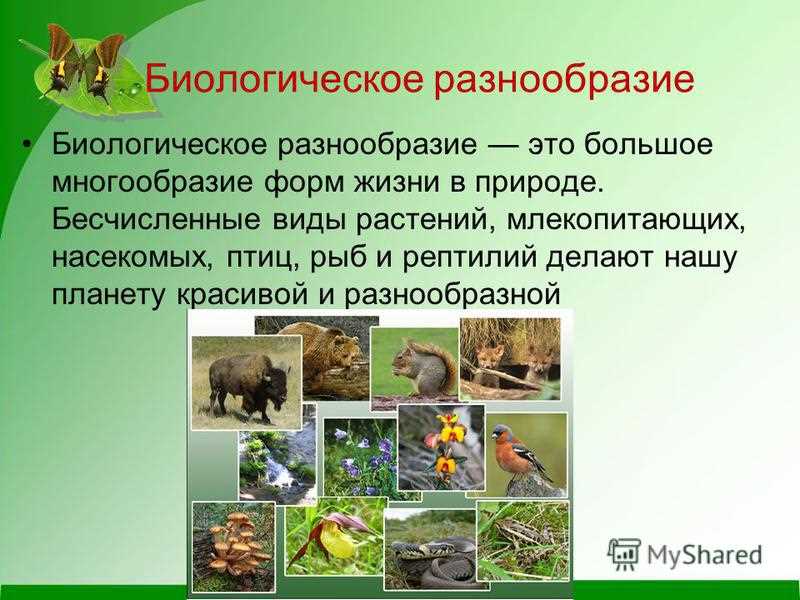
- Loss and destruction of habitats
- Use of pesticides
- Climate change
- Environmental pollution
Destruction of their natural habitat

The destruction of natural habitat is one of the main reasons for the decline in the number of butterflies and threatens their survival. Many species of butterflies depend on certain types of vegetation, such as grasslands, fields, or forests. However, due to the development of human activity, their habitats are subject to destruction and change.
One of the main reasons for the destruction of natural habitats is the development of agricultural land. To expand the area under crops, forests and shrubs are cut down, and meadows are also converted into arable land. This leads to the loss of the original vegetation on which the butterflies feed and breed.
Another reason for the destruction of natural habitats is development and infrastructural development. Large areas are allocated for the construction of roads, cities and industrial zones, which usually contain natural habitats for butterflies. This leads to their displacement and limited access to food and reproductive resources.
In addition, environmental pollution also has a negative impact on the habitat of butterflies. Emissions from industrial enterprises and vehicles pollute the air, soil and water, which leads to a deterioration in the living conditions of butterflies. Changes in the quality and composition of food, as well as the presence of toxic substances in the environment, can have a negative impact on the development and survival of butterflies.
Thus, the destruction of natural habitat is a serious threat to butterflies and their biodiversity. To preserve these beautiful and important creatures, it is necessary to take measures to protect and restore their habitats, as well as to reduce the negative impact of human activities on the environment.
Use of pesticides
The use of pesticides is one of the main reasons for the decline in the number of butterflies and their reduced contribution to the ecosystem. Pesticides are widely used to kill pests on crops, but they also affect many other organisms, including butterflies.
Pesticides can cause damage to butterflies directly if they get on their bodies or eyes. They can cause poisoning, reproductive dysfunction and the development of deformities in butterflies. In addition, pesticides can destroy their food sources such as nectar and leaves, causing them to starve and die.
The use of pesticides can also have an indirect effect on butterflies by destroying the plants they use as oviposition sites and food sources for caterpillars. When the plants that the caterpillars feed on are destroyed by pesticides, the caterpillars will disappear and eventually the number of butterflies will decrease.
It is important to be aware that the use of pesticides can have long-term effects on the ecosystem. When butterflies disappear or become less numerous, food chains and interactions within an ecosystem can be disrupted. Butterflies play an important role in plant pollination and are a food source for other organisms, including birds and insectivores. Therefore, in order to conserve biodiversity, it is necessary to limit the use of pesticides and apply alternative pest management methods that do not harm butterflies and other beneficial organisms.
Ways to save butterflies
Butterfly conservation is an important aspect of biodiversity conservation. Here are a few ways to help you save them:
1. Providing a suitable habitat

To conserve butterflies, a suitable habitat must be created and maintained. This includes planting plants that serve as food for the caterpillars and provide places to lay eggs and forage for adult butterflies. Choose planting sites that favor different types of butterflies to ensure species diversity.
2. Avoiding the use of chemical pesticides

Chemical pesticides can be harmful to butterflies and their larvae. When using pesticides in the garden or fields, try to choose non-harsh alternative pest control methods that do not harm the butterflies.
3. Create Butterfly Gardens and Butterfly Paths
Creating butterfly gardens and butterfly paths is a great way to attract butterflies to your area. Choose flowers that attract butterflies and plant them in your garden or along a path. This will provide extra places for butterflies to lay eggs and forage for food.
4. Participation in a butterfly monitoring program

Participation in a butterfly monitoring program will help scientists collect information about the butterfly population and their movements. You can volunteer to help collect data on butterflies in your area. This will help scientists better understand changes in butterfly populations and develop appropriate conservation measures.
All these ways together will help to save butterflies and their important role in the ecosystem. Everyone can contribute to the preservation of these beautiful and irreplaceable creatures.
Creating and maintaining their habitat

To create and maintain a habitat for butterflies, it is necessary to take into account their characteristics and needs. One of the key factors is the presence of plants that serve as a source of food and a place to lay eggs.
Plants that attract butterflies can be of different species and have different requirements for growing conditions. Therefore, it is important to create a variety of vegetation in order to provide food and life resources for different species of butterflies.
In addition, factors such as access to water and shelter must be considered. Butterflies need moist places to drink and breed, so you can create artificial ponds or place water containers in the area where the butterflies live.
It is also important to provide shelters for butterflies where they can hide from predators and adverse weather conditions. To do this, you can create areas with dense vegetation or install special shelters, such as butterfly houses or rock beds, where butterflies can find protection.
An important aspect of maintaining the habitat of butterflies is also the absence of the use of pesticides and herbicides, which can negatively affect butterflies and their habitat. It is better to use natural methods of pest control and plant care.
Creating and maintaining a habitat for butterflies requires cooperation and attention to detail. However, this is an important matter that contributes to the conservation of biodiversity and allows butterflies to play their role in the ecosystem.
Limiting the use of pesticides
Limiting the use of pesticides is an important measure to conserve biodiversity and protect butterflies. Pesticides such as insecticides and herbicides can have a negative effect on butterflies by destroying their larvae, food plants and their habitats.
The use of pesticides can lead to a decrease in the number of butterflies and even their disappearance from certain regions. Butterflies play an important role in the ecosystem, as they are pollinators of many plants. They carry pollen from flower to flower, aiding the pollination process and providing plant diversity.
Limiting the use of pesticides can be achieved through the use of alternative pest control methods. For example, biological methods can be used, such as the attraction of natural enemies of pests or the use of repellent plants. An integrated approach to pest management can also be applied, including the use of pesticides only when necessary and in compliance with all safe measures.
Limiting the use of pesticides also requires education and public awareness of the harm they can cause to the environment and biodiversity. It is important that farmers, horticulturists and other people involved in farming or horticulture understand and apply alternative methods of pest control in their work.
Limiting the use of pesticides is an important step in the conservation of biodiversity and the protection of butterflies. This will conserve their numbers, ensuring that their important role in the ecosystem continues and maintaining plant diversity.
Importance of butterflies to biodiversity
Butterflies play an indispensable role in maintaining biodiversity in an ecosystem. They perform the function of pollinators, transferring pollen from one plant to another, contributing to their reproduction. Through this process, butterflies contribute to the conservation of the genetic diversity of the plant world.
Butterflies are also food for many animals, including birds, frogs, and lizards. Their presence in the ecosystem helps maintain the food chain and ensures balance in animal populations. Without butterflies, some animal species will not be able to get enough food, which can lead to ecological imbalance.
In addition, butterflies are indicators of the state of the environment. They are sensitive to changes in climate and atmospheric composition, so their presence or absence can serve as an indirect indicator of the ecological state. If butterflies disappear from a certain area, this may be a sign of ecosystem disturbance and may require measures to be taken to restore it.
Thus, butterflies play an important role in biodiversity by maintaining plant diversity, providing food for other animals, and serving as indicators of the state of the environment. Understanding and preserving their role in the ecosystem is necessary to maintain a balance in nature and preserve biodiversity.

